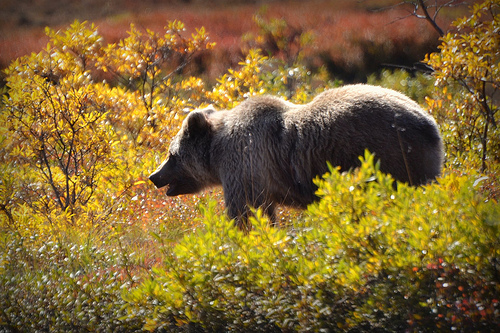To capture wildlife on film is one of the most exciting elements of photography with sheer determination and a heck of a lot of patience often proving to be the deciding factor between a good shot and a great shot.
Even in the UK there are no end of chances to photograph animals in their natural environment however, if you’re looking to extend your search further afield then some major thrills lay in store with the Big 5 of Africa often cited as a definite ‘must experience’ rite-of-passage.
Of course, it’s not what you shoot – it’s how you shoot it and from camping out overnight to setting up an infrared trip beam, sometimes luck can inevitably play a huge part in capturing some incredibly natural moments.
If you’re planning on going travelling or you’re intent on staying put, the following 5 locations will all provide just enough bird and animal life to drive you wild with excitement.
Big Game Safaris
Going on an organised safari to Africa or Asia will get you up close to some of the most magnificent animals on the planet. Imagine a watering hole at dusk just as a pride of lions make their way down to drink or a flock of pink flamingoes set the sky alight as they’re startled into flight. There’s no question that anyone interested in wildlife photography will be totally in their element and from the back of an open-top Jeep to the sanctuary of a safari lodge this is where you really win your spurs.
National Parks
Going out on safari with a guide is one thing but venturing forth under your own steam is quite another. If you plan to explore European or USA national parks then listening intently to ranger instructions is often the key to success. You may not come face to face with a giraffe or an elephant however, brown bears, bald eagles and mountain lynx will do more than enough to set your pulse and your trigger finger, racing. The French Alps, the Italian Dolomites and Germany’s Black Forest region are all excellent locations if you’re planning a European wildlife photography tour.
Bird Sanctuaries
In the UK, there are a whole host of marsh and wetland devoted to the protection of bird colonies and migrating species. These natural habitats not only provide birds with safe and natural grounds for breeding and feeding but they also serve wildlife photographers equally well. Permanent hides and viewing platforms provide ample means for an amateur photographer to get some exquisite shots and if you’ve got the patience and the inclination, bird sanctuaries are ideal locations to capture regional and migrating bird life with the minimum of fuss.
Lakes and Rivers
If you prefer your wildlife photography mission to be a bit more of a challenge as opposed to a bird sanctuary or organised tour of a national park then try heading to the nearest lake or river around dawn and wait for the results. This is the perfect place to discover birds feeding, landing and swimming on water and often the reflective images carry some truly worthwhile results. River banks and the shores of lakes are home to a remarkable blend of wildlife and even though they may not exhibit the same species as an African safari they certainly never fail to excite.
Back Gardens
It will come as no surprise to most that some of the best photographs ever entered into the Wildlife Photographer of the Year competition were taken at home in the entrant’s back garden. Granted, the location was usually the Outer Hebrides however, it just goes to show that with a little local knowledge you can go along way. Try enticing birds and animals with food or a safe place to nest and then set up your tripod and wait for the results. Juxtaposing a robin’s redbreast against crisp white snow or snapping a badger or hedgehog snuffling for an evening snack are just as impressive as any one of the Big 5, I’m sure you’ll agree.
